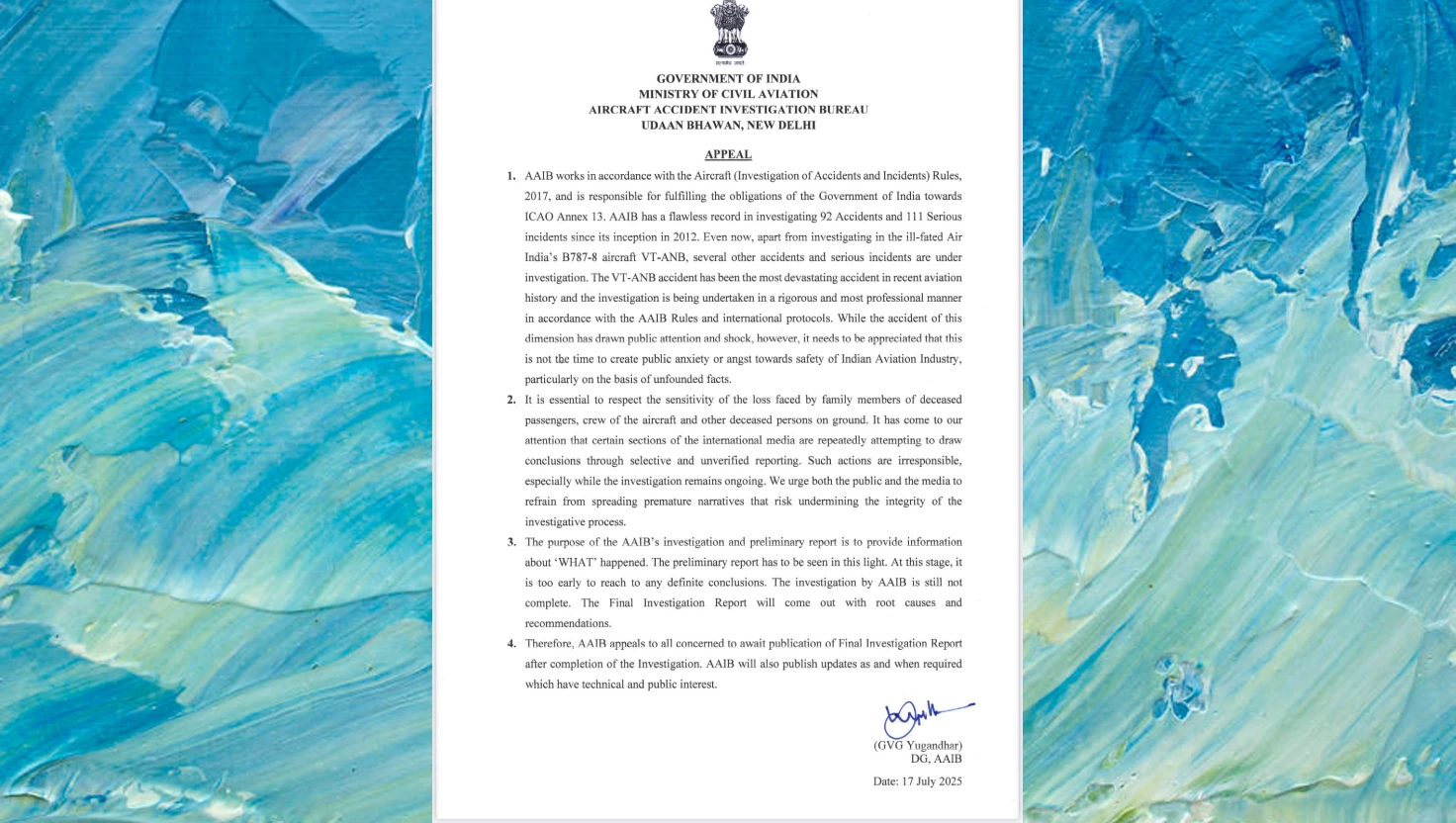India’s Exports Driven by Electronics, Engineering, Agriculture and Pharmaceuticals in FY25

Representative Image
India's exports in FY2024-25 were led by electronics, engineering, agriculture, and pharmaceuticals, marking a shift towards value-added, high-tech trade.
India's merchandise exports in the 2024-25 fiscal year were dominated by high-performing sectors including engineering goods, electronics, agriculture, and pharmaceuticals, according to newly released government data. Collectively, these four sectors contributed over half of the country’s total exports, valued at USD 437.42 billion.
The figures, published on 16 May by Indian authorities, highlight an ongoing shift in the country's export composition toward more value-added and technology-intensive products. Engineering goods retained the largest share of total exports at 26.67%, while electronics recorded the fastest growth, increasing by 32.46% over the previous year.
Electronics Lead Export Growth
India’s electronics sector emerged as the fastest-growing export segment in FY25. Exports rose from USD 29.12 billion in FY24 to USD 38.58 billion in FY25. This marks a continued upward trajectory from previous years, when electronics exports stood at USD 23.6 billion in FY23 and USD 15.7 billion in FY22.
Within this sector, computer hardware and peripherals saw a notable rise, doubling from USD 0.7 billion to USD 1.4 billion. The main destinations for Indian electronics exports were the United Arab Emirates, the United States, the Netherlands, the United Kingdom, and Italy.
A senior government official commented that the electronics sector "is clearly a rising star in India’s export landscape, showing the tangible impact of targeted policy incentives."
Engineering Goods Maintain Dominance
Engineering exports remained the single largest contributor to India’s merchandise trade, reaching USD 116.67 billion, a 6.74% increase compared to the previous year. This sector has seen consistent growth since 2021-22, when it surpassed the USD 100 billion mark for the first time. Key export destinations included the US, UAE, Saudi Arabia, UK, and Germany.
Between 2014-15 and 2020-21, engineering exports ranged between USD 73 billion and USD 83 billion annually. A significant jump occurred in 2021-22, when they reached USD 112.2 billion, establishing a new benchmark for subsequent years.
Pharmaceuticals Reach Over 200 Countries
India's pharmaceutical exports climbed 9.4% to USD 30.47 billion in FY25, continuing a trend of consistent growth since 2014-15. Indian drugs and pharmaceutical products now reach over 200 countries worldwide, underlining the country’s role as a major global supplier of affordable, high-quality medicines.
The sector gained international visibility during the COVID-19 pandemic and has maintained its momentum since.
Agricultural Exports Show Broad-Based Growth
Agriculture and allied products accounted for USD 51.86 billion in exports during FY25, a 7.36% increase year-on-year. India remains a key global supplier of a wide range of agricultural commodities including rice, spices, coffee, tea, fruits, vegetables, and marine products.
Rice exports reached a record high of USD 12.5 billion, up from USD 10.4 billion in FY24, reinforcing India’s position as the world’s top rice exporter with nearly 40% of the global market share. Key buyers included Saudi Arabia, Iran, Iraq, the UAE, the USA, and Yemen.
Spice exports totalled USD 4.45 billion, with China, the US, UAE, Bangladesh, and Thailand among the largest importers. Major products included chilli, cumin, turmeric, and ginger.
Coffee exports increased to USD 1.81 billion from USD 1.29 billion in the previous year. India is the seventh-largest coffee producer globally, with Karnataka and Kerala leading in production. Many regional coffee varieties hold geographical indication (GI) status.
Tea exports rose to USD 0.92 billion, with Assam, West Bengal, Tamil Nadu, and Kerala contributing the bulk of production. Domestic consumption accounts for around 81% of India’s tea output.
Tobacco exports also saw significant growth, reaching USD 1.98 billion, up from USD 1.45 billion in FY24. India is the world’s second-largest tobacco producer, with major markets in the UAE, Belgium, Indonesia, Egypt, the USA, and Turkey. The sector supports employment for nearly 45.7 million people.
Fruit and vegetable exports totalled USD 3.9 billion, up from USD 3.7 billion in FY24. Key exports included grapes, pomegranates, mangoes, bananas, onions, and tomatoes. Bangladesh, the UAE, the Netherlands, Nepal, and Malaysia were among the largest importers.
Marine product exports reached USD 7.2 billion in FY25. The number of countries importing Indian marine products rose from 105 in 2014-15 to 130 in the latest fiscal year, reflecting a broadening global footprint.
Context: Policy and Economic Impact
The performance of these sectors aligns with India's broader economic objectives, including diversification of export markets and strengthening of domestic manufacturing. Programmes such as the Production-Linked Incentive (PLI) scheme and the “Make in India” initiative have supported industries like electronics and pharmaceuticals by encouraging investment, boosting infrastructure, and enhancing global competitiveness.
India’s shift towards value-added exports is viewed as a critical element of its ambition to become a USD 5 trillion economy. With sustained policy backing and expanding international markets, the country’s trade profile appears increasingly oriented towards sectors with long-term strategic importance.
Conclusion
India's export data for FY2024-25 points to a dynamic shift in the country’s trade composition, with electronics, engineering, pharmaceuticals, and agriculture driving growth. The continued rise of high-value and technology-based sectors indicates a broader transformation in India’s export strategy, underpinned by targeted policy support and a push for greater global integration.

Reliance Retail acquires Kelvinator, The Coolest One
Reliance Retail has purchased the Kelvinator brand from Electrolux for nearly ₹160 crore, aiming to strengthen its position in India's consumer durables market.
| 2025-07-19

Saiyyara has shattered every myth about launching newcomers. No big names, no big PR
Madhur Bhandarkar praises debut film 'Saiyaara' for its raw talent and storytelling, marking a shift in Bollywood's approach to newcomers.
| 2025-07-19

India slams reports blaming pilots for Air India crash
India's AAIB disputes US media assertions regarding Air India AI 171 crash, highlighting ongoing investigation and sensitivity towards victims' families.
| 2025-07-18

India Secures Four-Wicket Win in ODI Series Opener Against England
India achieves a four-wicket victory over England in the ODI series opener, led by Deepti Sharma's unbeaten 62 runs.
| 2025-07-17

Air India inspection claims no problems found with Boeing 787 fuel control switches
Air India has conducted thorough inspections of its Boeing 787 fuel control switches, reporting no problems following a DGCA directive.
| 2025-07-17




